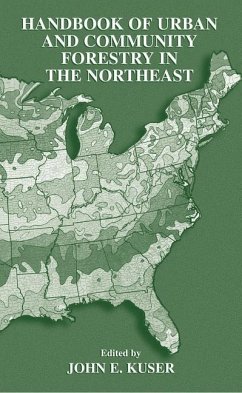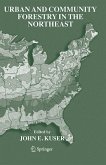This volume is a handbook that encompasses all aspects of urban forestry. Chapters cover topics from legal, financial, and managerial matters to the fundamentals of planting, maintaining, and recycling trees and green areas in cities and towns in the Northeast and Middle-Atlantic regions. There is currently no other book that treats this region so comprehensively. The book will be a resource for professionals in forestry, conservation, urban planning, and landscape architecture.
With the emergence of urban and community forestry as the fastest growing part of our pro fession in the last 15 years, the need for a book such as this inevitably developed. The So ciety of American Foresters' urban forestry working group counts 32 or more universities now offering courses in this subject, and the number is growing. For the last several years I have coordinated a continuing education urban forestry course at Rutgers for nonmatriculated students. Registrants have included arborists, shade tree commissioners, landscape architects, city foresters, environmental commissioners, park superintendents, and others whose jobs involve care and management of trees. The course was started by Bob Tate in 1980, around a core of managerial subjects such as in ventories, budgets, and public relations. After Bob left in 1984 to join Asplundh and later to start his own prosperous business in California, the course languished after it exhausted the local market for those subjects.
With the emergence of urban and community forestry as the fastest growing part of our pro fession in the last 15 years, the need for a book such as this inevitably developed. The So ciety of American Foresters' urban forestry working group counts 32 or more universities now offering courses in this subject, and the number is growing. For the last several years I have coordinated a continuing education urban forestry course at Rutgers for nonmatriculated students. Registrants have included arborists, shade tree commissioners, landscape architects, city foresters, environmental commissioners, park superintendents, and others whose jobs involve care and management of trees. The course was started by Bob Tate in 1980, around a core of managerial subjects such as in ventories, budgets, and public relations. After Bob left in 1984 to join Asplundh and later to start his own prosperous business in California, the course languished after it exhausted the local market for those subjects.







